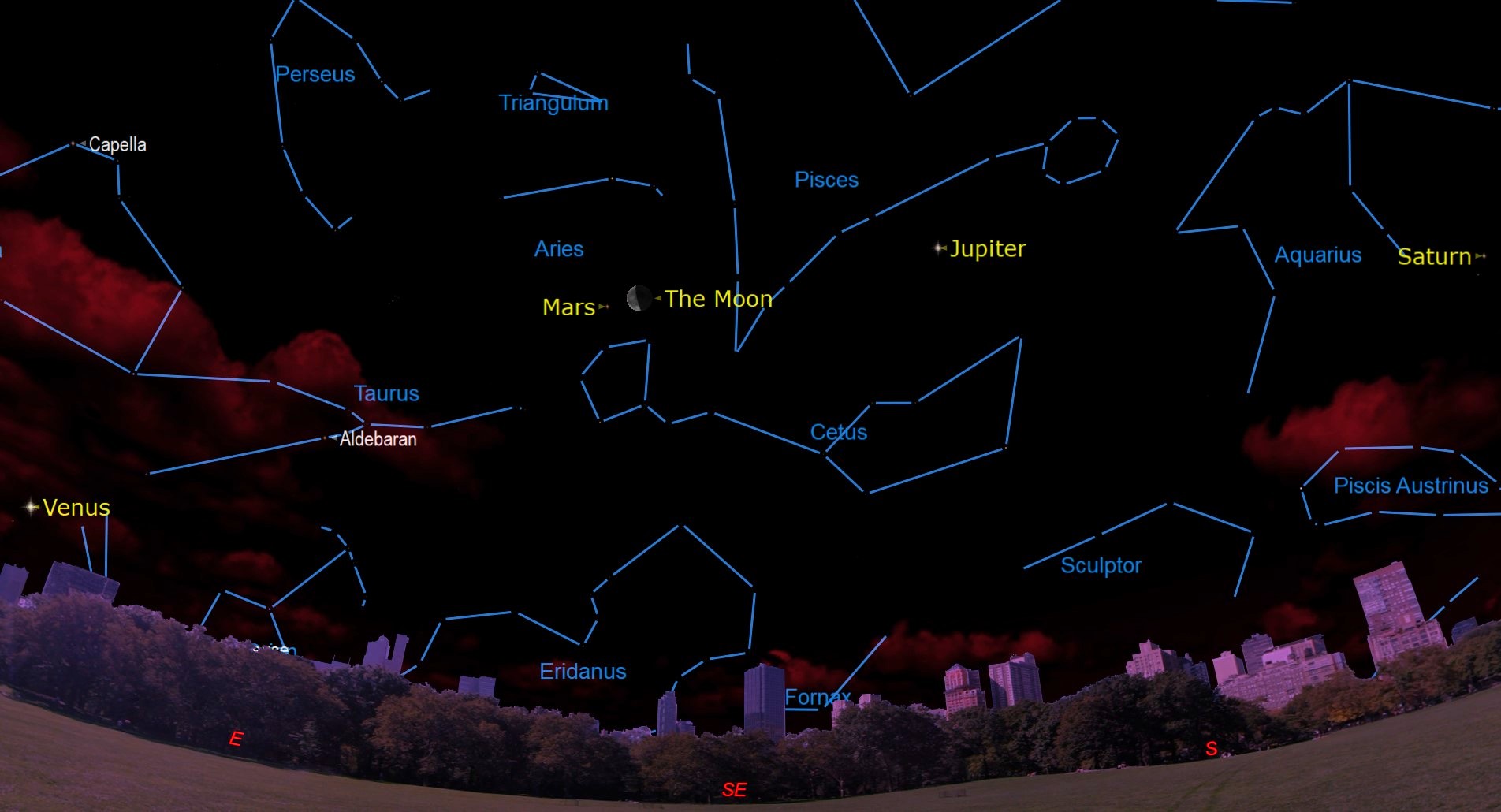Catch the moon and Mars cozying up to each other on Thursday
The pair will be close enough to be visible in the same field of view when using a pair of binoculars.

Look to the southeastern sky in the early hours of Thursday (July 21) morning to see the waning crescent moon shining close to Mars.
The pair will be close enough to share the field of view in a pair of binoculars. You'll find the distinctive red dot of Mars just several finger-widths to the lower left (or 4 degrees to the celestial east-northeast) of the moon, according to astronomer Chris Vaughan of Astrogeo.ca, who prepares Space.com's monthly Night Sky calendar in cooperation with Simulation Curriculum.
The exact time of the event varies depending on your specific location, so you'll want to check out a skywatching app like SkySafari or software like Starry Night to check for times. Our picks for the best stargazing apps may help you with your planning.
Related: The brightest planets in July's night sky: How to see them (and when)
As the sky begins to brighten at around 5 a.m. local time, the moon and Mars will have journeyed about halfway up the southeastern sky.
If you don't manage to make it out on Thursday to see the pair, don't fret as you'll be able to spot them together the following morning (Friday, 22 July) as the moon will be stationed just to the lower left (celestial east) of Mars, according to Vaughan.
Mars is the fourth planet from the sun and perhaps one of the most distinctive planets in the night sky due to its famous red hue. It gets its color from the oxidization, or rust, of iron-rich minerals in its regolith — the loose dust and rock covering its surface.
Breaking space news, the latest updates on rocket launches, skywatching events and more!
If you're looking for a telescope or binoculars to view the night sky, our guides for the best binoculars deals and the best telescope deals now can help. Want something a little more planet specific? Our best telescopes for seeing planets guide has got you covered.

Looking for a telescope for the next stargazing event? We recommend the Celestron Astro Fi 102 as the top pick in our best beginner's telescope guide.
The moon is currently embarking on its monthly tour of the planets, after calling in on Mars it will wander across to Uranus on July 22, Venus on July 26 and wrap up its planetary travels with Mercury on July 29.
If you fancy taking a more in-depth tour of our rocky companion our ultimate guide to observing the moon will help you plan your next skywatching venture whether it be exploring the lunar seas, mountainous terrain, or the many craters that blanket the landscape. You can also see where astronauts, rovers and landers have ventured with our Apollo landing sites observing guide.
Follow us on Twitter @Spacedotcom and on Facebook.

Daisy Dobrijevic joined Space.com in February 2022 having previously worked for our sister publication All About Space magazine as a staff writer. Before joining us, Daisy completed an editorial internship with the BBC Sky at Night Magazine and worked at the National Space Centre in Leicester, U.K., where she enjoyed communicating space science to the public. In 2021, Daisy completed a PhD in plant physiology and also holds a Master's in Environmental Science, she is currently based in Nottingham, U.K. Daisy is passionate about all things space, with a penchant for solar activity and space weather. She has a strong interest in astrotourism and loves nothing more than a good northern lights chase!
